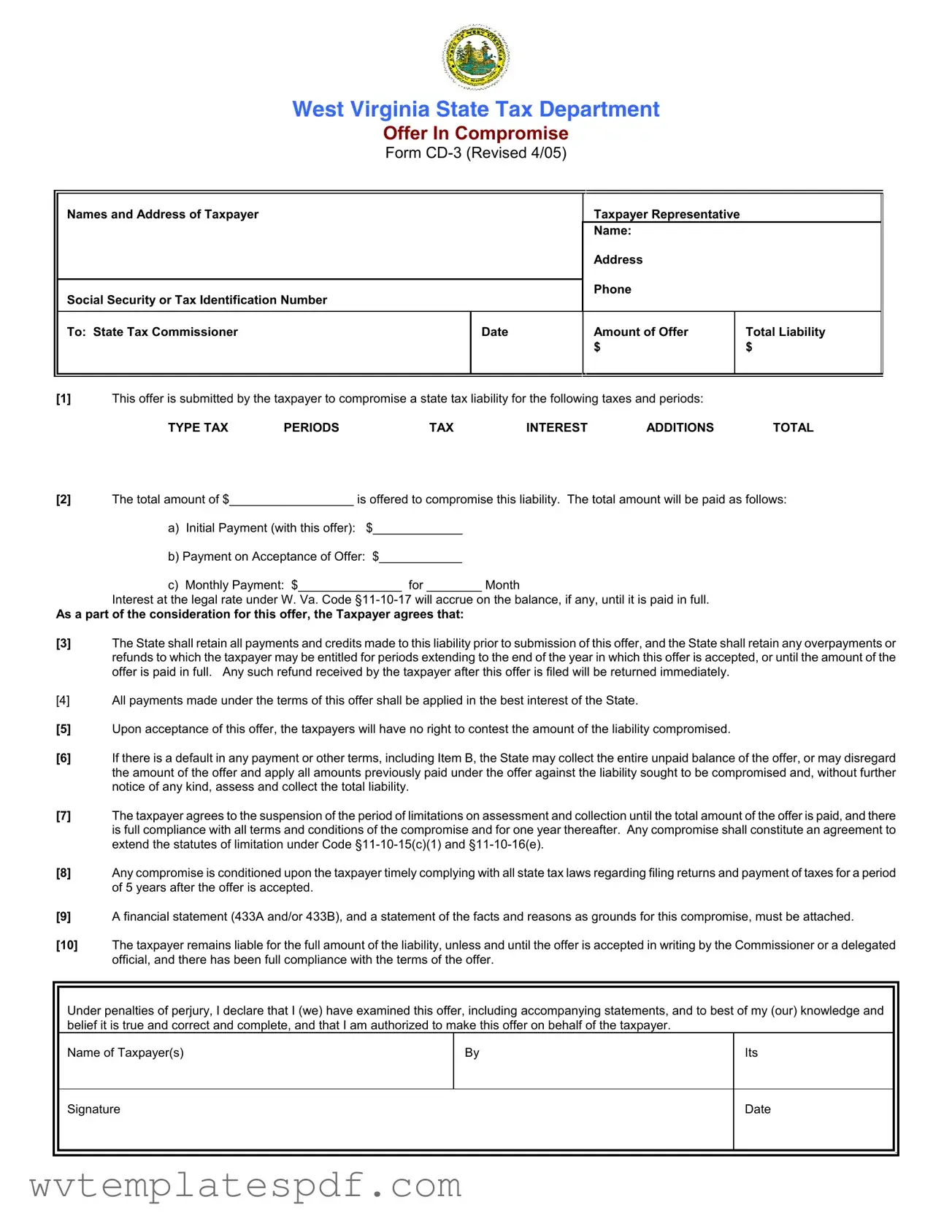When filling out the West Virginia Offer in Compromise Form CD-3, individuals often make several common mistakes that can hinder their chances of a successful application. Understanding these errors can help taxpayers navigate the process more effectively.
One significant mistake is failing to provide complete and accurate personal information at the top of the form. This includes the taxpayer's full name, address, and taxpayer identification number. If the information is incomplete or incorrect, it can lead to delays or even rejection of the offer. It is essential to double-check this information to ensure it matches official records.
Another frequent error is neglecting to list all tax liabilities that are being compromised. In section (1) of the form, taxpayers must specify the types of tax, periods, and amounts. Omitting any of this information can create confusion and may result in the offer being deemed insufficient. Taxpayers should take care to provide a thorough breakdown of their liabilities.
Some individuals mistakenly include amounts that have already been paid or collected on their liabilities when stating the total amount offered in section (2). This section should reflect only the amount currently being offered to settle the debt. Miscalculating this figure can lead to rejection, as the state expects a realistic and fair offer based on the taxpayer's current financial situation.
In section (9), taxpayers often fail to provide a detailed explanation of why the state should accept their offer. This is a crucial part of the application. Without a well-articulated rationale, including facts and reasons supporting the claim of inability to pay more, the offer may not be taken seriously. It is advisable to attach additional pages if necessary to thoroughly explain the circumstances.
Another common oversight is not signing and dating the offer. The taxpayer must sign the form, and if someone else is signing on their behalf, a power of attorney must accompany the submission. Failing to include a signature can result in the offer being considered invalid.
Taxpayers also sometimes forget to include the required financial statements, specifically Form 433-A and/or Form 433-B. These forms provide critical information about the taxpayer's financial situation and must be completed in full. Incomplete forms can lead to delays or denials, as the state needs this information to evaluate the offer accurately.
Additionally, individuals may overlook the requirement for future compliance with tax laws. The offer is contingent upon the taxpayer adhering to all state tax laws for five years following acceptance. Ignoring this condition can lead to the offer being revoked, and the taxpayer may find themselves in a worse position than before.
Lastly, some taxpayers fail to understand that submitting the offer does not automatically halt collection efforts. If the state believes the offer is a tactic to delay payment, they may continue their collection actions. It is essential to be aware of this and to continue making any agreed-upon payments during the process.
By being mindful of these common mistakes, taxpayers can improve their chances of successfully navigating the West Virginia Offer in Compromise process. Attention to detail and a clear understanding of the requirements are key to achieving a favorable outcome.
